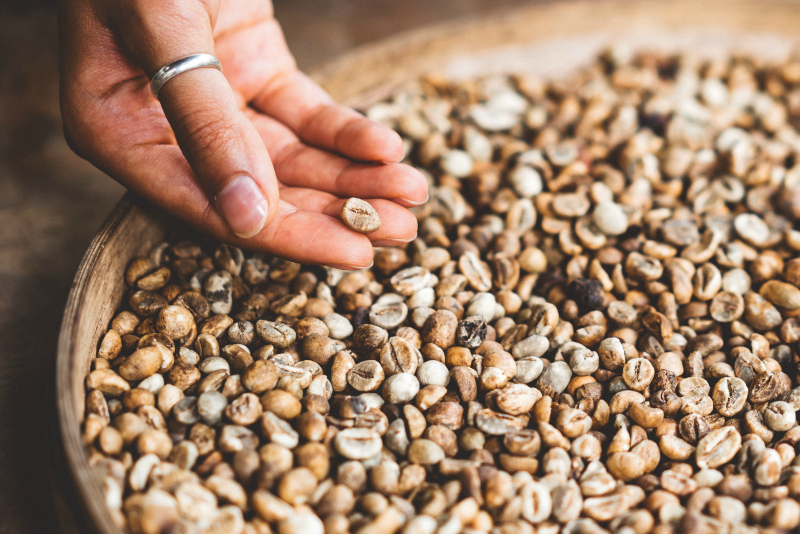Are you tired of living with chronic pain? Do you want a more natural solution that doesn’t come in the form of a pill? Maybe you are pain-free, but want to adopt a new, healthier lifestyle so you can keep up with the pace of life.
Whether you have an inflammatory condition or you just want to eat better, an anti-inflammatory diet can help you live your best life. The great news is, there is no buy-in to a diet program, no powdered shakes to make, and you don’t even have to visit a different grocery store. The anti-inflammatory diet is about making better food choices to give your body the nutrients it needs to combat inflammation.
Anti-Inflammatory Diet Defined
A diet high in anti-inflammatory foods is widely considered a healthy one. It includes fruits, vegetables, whole grains, plant-based proteins like beans and nuts, fatty fish, small amounts of lean meats and fresh herbs and spices. More than a diet, it’s a lifestyle change that also calls for low or no salt, alcohol in moderation, and the avoidance of most processed foods.
Proponents claim following an anti-inflammatory diet boasts a variety of health benefits from easing chronic pain to reducing the risk of heart disease and other serious illnesses. A recent study suggests this diet could even help boost bone health and prevent fractures in some women.
While additional research is needed to prove the long-term health benefits of adopting an anti-inflammatory diet to address more serious issues, most medical professionals would agree there is no harm in trying it out to see if it can help improve your condition.
Why “Anti-Inflammatory?”
The reason foods like these are called “anti-inflammatory” is because they do just that: they help your body naturally decrease inflammation caused by illness or injury.
Your immune system is constantly working on your behalf attacking anything it views as a threat. When the body is injured or infection occurs, inflammation is the body’s natural response as it brings nutrients and immune cells to help it heal.
This inflammation can be short-term, such as a muscle strain after a workout, or it can be a whole-body inflammation triggered by serious conditions like heart disease, diabetes, Alzheimer’s or cancer.
When this inflammation occurs, there are certain foods that have the nutrients your body needs to restore health at a cellular level. By eating anti-inflammatory foods on a regular basis your body has the nutrients required to fight off current inflammation. In addition, this steady flow of nutrients into your body will help prevent future flare-ups.
The Top 5 Anti-Inflammatory Foods
Adding more anti-inflammatory foods to your diet is as easy as walking around the perimeter of your local grocery store. There you will find fresh food like fruits, vegetables, and fish versus the processed boxed items that typically dominate the middle aisles of most American grocery stores.
While you walk that perimeter, be on the lookout for these top five anti-inflammatory foods to add to your diet today:
1. Fish
Certain fish like salmon, tuna, sardines, anchovies, and other cold-water fish are rich in the omega-3 fatty acids. Research has shown these omega-3 fatty acids reduce inflammation and offer other health benefits like reducing the risk of heart disease and cancer.
The standard American diet includes almost ten times more omega-6 fatty acids—found in nuts seeds, vegetable and corn oils, processed foods and animal fats—than omega-3s, and this imbalance can cause inflammation and pain. By eating more of this kind of fish, you can naturally restore this balance.
If you don’t like to eat fish, there are fish oil supplements available; just make sure to choose a reputable brand and check to ensure the supplement contains omega-3s, not omega-6s.
2. Berries
Berries like blueberries, blackberries, and strawberries are rich in anti-inflammatory phytonutrients such as flavonols, anthocyanins and ellagic acid that can help the body heal when inflammation occurs. Cherries are also an excellent source of anthocyanins, and the more tart they are, the better. Research has shown that tart cherries carry higher levels of both anthocyanins 1 and 2, which is like getting a double-dose of inflammation-fighting nutrients.
3. Vegetables
When buying vegetables to fight inflammation, think green.
Cruciferous veggies like bok choy, broccoli, brussels sprouts, cabbage, collard greens, kale, mustard greens cauliflower, and spinach are packed with sulforaphanes which offset inflammation. To add a little color besides green, tomatoes, pumpkins and sweet potatoes also carry similar inflammation-fighting properties.
4. Go Nuts
Walnuts, pine nuts, pistachios, and almonds contain the inflammation-fighting monounsaturated fat your body needs, as well as protein and fiber you want to balance your diet. Especially walnuts – they contain high levels of omega-3 fatty acids as well as some valuable phytonutrients rarely found in any foods, so go nuts! Just stick to a handful a day since the fat and calories can add up.
5. Avocados
Avocados or its oil can help increase the absorption of the beneficial antioxidant carotenoid. Carotenoids such as beta-carotene, lutein, alpha-carotene, and zeaxanthin fight inflammation, strengthen the immune system and protect the body against free radical damage.
Now What? Create Your New Anti-Inflammatory Diet
Aside from these choices, there are many more delicious anti-inflammatory options you can try, and most you can find with a quick online search based on your taste preferences. There are online experts and communities to help support your new approach to food, and countless websites offering recipes, tips, and advice!

